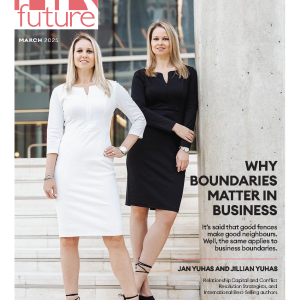Do your employees lose focus during lengthy training sessions or struggle to keep pace in a remote workplace? Traditional learning methods often fail today, as hybrid and remote teams require short, focused lessons they can complete at their own pace. Microlearning is a decent solution to this problem. It breaks training into short lessons that employees can finish in a few minutes. Read our article to learn how to scale microlearning in your organization and get practical steps you can apply today.
What is microlearning?
Microlearning is a training method that breaks down complex information into short lessons, which employees can complete within several minutes. Each lesson addresses a single skill or concept, such as how to utilize a new feature in project management software or the steps for accurate data entry. You can check the article What is microlearning – guide by Headway and learn about the benefits and features of this learning method.
Lessons can be available in various formats, including brief videos, infographics, short articles, mini-quizzes, and interactive modules. Employees access these resources anytime, from any location, on their mobile devices or computers. This flexibility helps remote and hybrid teams stay engaged and consistent with training requirements.
There is a common misunderstanding about the limitations of microlearning. It is well-suited to introduce quick updates and reinforce learned skills, such as using specific CRM functions or recalling company cybersecurity guidelines. But it does not replace the detailed training programs required for broader topics, such as mastering new programming languages or understanding complex financial systems.
Key benefits of microlearning for HR leaders
Microlearning gives HR leaders several practical advantages over traditional learning methods. You can address common workforce issues, including low motivation, inconsistent skills, and slow progress. Here are the main benefits:
- Employee engagement. Employees pay better attention to lessons in short formats. Short videos or brief quizzes keep workers interested and reduce boredom. For example, mini-lessons about IT security, presented through short scenarios, hold their attention better than a long security lecture.
- Flexibility and accessibility. Microlearning content is compatible with various devices, including phones, tablets, and laptops, and requires minimal preparation. Employees can check short modules anytime, while waiting between meetings or commuting home.
- Rapid skills deployment. Microlearning introduces new skills when workers need them most. If the marketing team needs to learn a new social media tool for an upcoming campaign, brief tutorials provide quick training instead of waiting weeks for a formal course.
- Better information retention. Short content, such as the best book summaries by Headway, helps workers memorize important information more easily compared to large amounts of material presented at once. Workers are more likely to recall cybersecurity password rules after short lessons than after completing one full-day training session every few months.
Practical steps to scale microlearning in your organization
To expand microlearning across your organization, a structured approach is necessary. The following practical steps help HR leaders deliver short training to more teams.
Step 1: Secure stakeholder buy-in
You must first gain support from leadership and key team members before starting any microlearning effort. Develop a business case that explains goals and expected impact on employee skills or daily operations. Show success stories or pilot results to persuade executives who may question whether short training works in practice.
Step 2: Audit existing learning content for micro-conversion
Review current training resources and determine which ones can be broken down into short lessons. Simple itemized checklists, videos under five minutes, or common scenario-based examples often turn easily into micro-units. Discard old or lengthy materials that do not fit this new method.
Step 3: Select scalable tech
Select technology tools that scale across large workforce groups with minimal setup effort. Pick one learning platform that all workers can access from computers and mobile devices. Systems with built-in artificial intelligence to track learner progress give useful data about worker performance and engagement gaps.
Step 4: Build a repeatable design/branding system
Create standard templates for visual elements, text formats, and content style that all training developers apply uniformly. Write concise guidelines so designers and content creators understand how lessons should be presented. Standard formats help employees become comfortable and recognize company-approved learning resources.
Step 5: Roll out pilot programs and iterate quickly
Start microlearning projects by testing methods with small employee groups first. Collect immediate feedback to adjust lessons right away – fix confusing questions or shorten videos that employees find long or boring.
Step 6: Integrate microlearning with peer/social/collaborative learning
Combine brief individual lessons with group discussions, interactive team chats, or social sharing features, where workers learn together and discuss lesson topics. Employees can answer each other’s questions in groups or discuss practical examples related to new skills. Linking single-person modules to teamwork maintains worker interest over time.
Step 7: Measure and optimize
Set measurable targets such as lesson completion rates, skill retention scores, employee feedback results, or concrete job improvements after training sessions. Check how well teams perform against these agreed-upon measures. Adjust course length, content difficulty level, delivery methods, or assessment approaches based on this performance data.
Biggest barriers to scaling microlearning
Scaling microlearning programs can present some common obstacles for HR teams. If you do not address these challenges early, your organization may face limitations later. Below are the main roadblocks to overcome:
- Content consistency. As different teams create more lessons, content often loses standard formatting, tone, or accuracy. You need a straightforward process to review each mini-lesson so all modules meet your organization’s quality requirements.
- Growing content library. When your company creates many short lessons, it accumulates an extensive resource library. Without an organized system to categorize and update resources, employees waste time searching for specific topics or encounter outdated information.
- Accessibility. Employees might face accessibility problems as your team creates more lessons designed for various devices and locations. You need to test videos, quizzes, and articles across multiple devices, including mobile phones, laptops, browsers, and different internet speeds, before rollout.
- Alignment with broader HR strategy. Large-scale microlearning efforts require alignment with your existing long-term training plans and overall HR goals. You must evaluate whether new lessons match company priorities and skill-building objectives.
Start scaling microlearning in your organization
Microlearning helps your team learn better. Short lessons fit into employees’ daily tasks and keep training feeling fresh. When expanding microlearning across different teams, check progress data frequently. Select the tools carefully and test them with small groups first. Also, stay alert for potential issues, such as content quality or access.
Guest writer


























